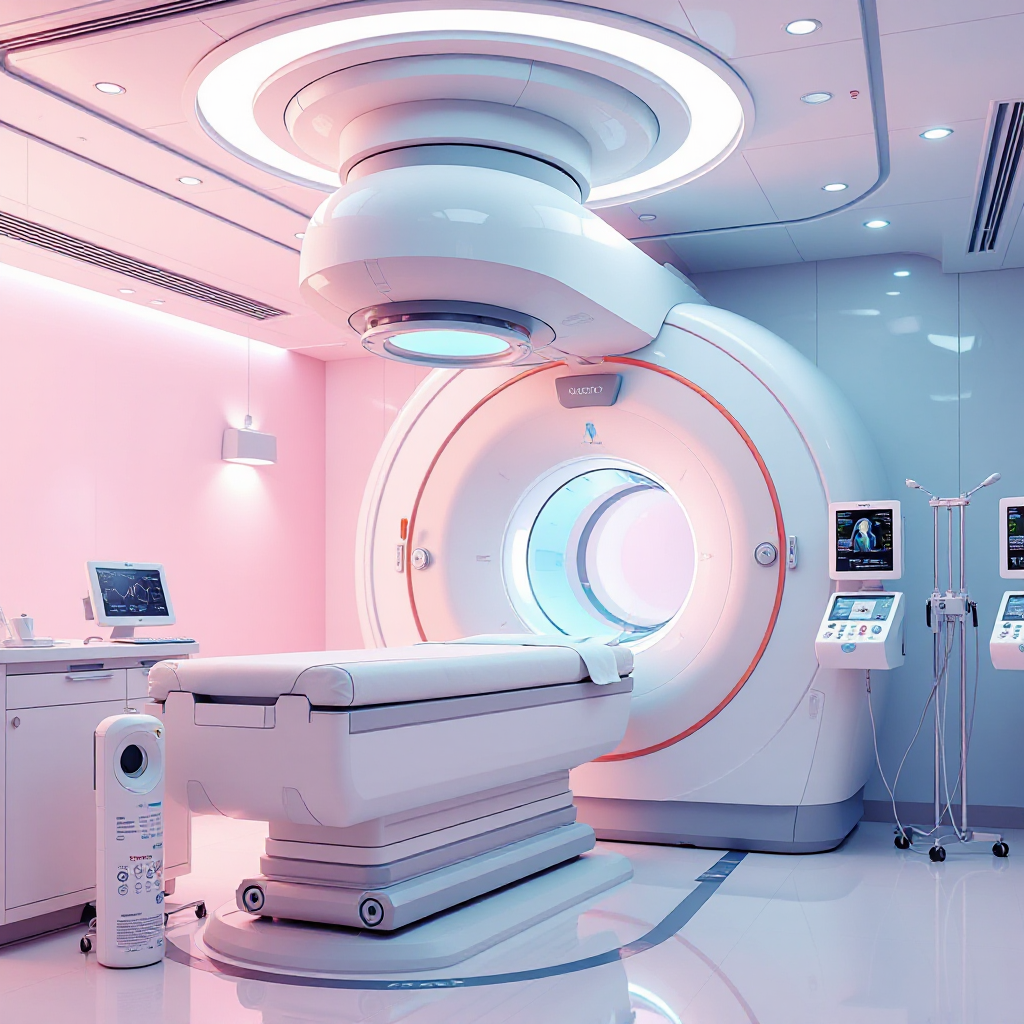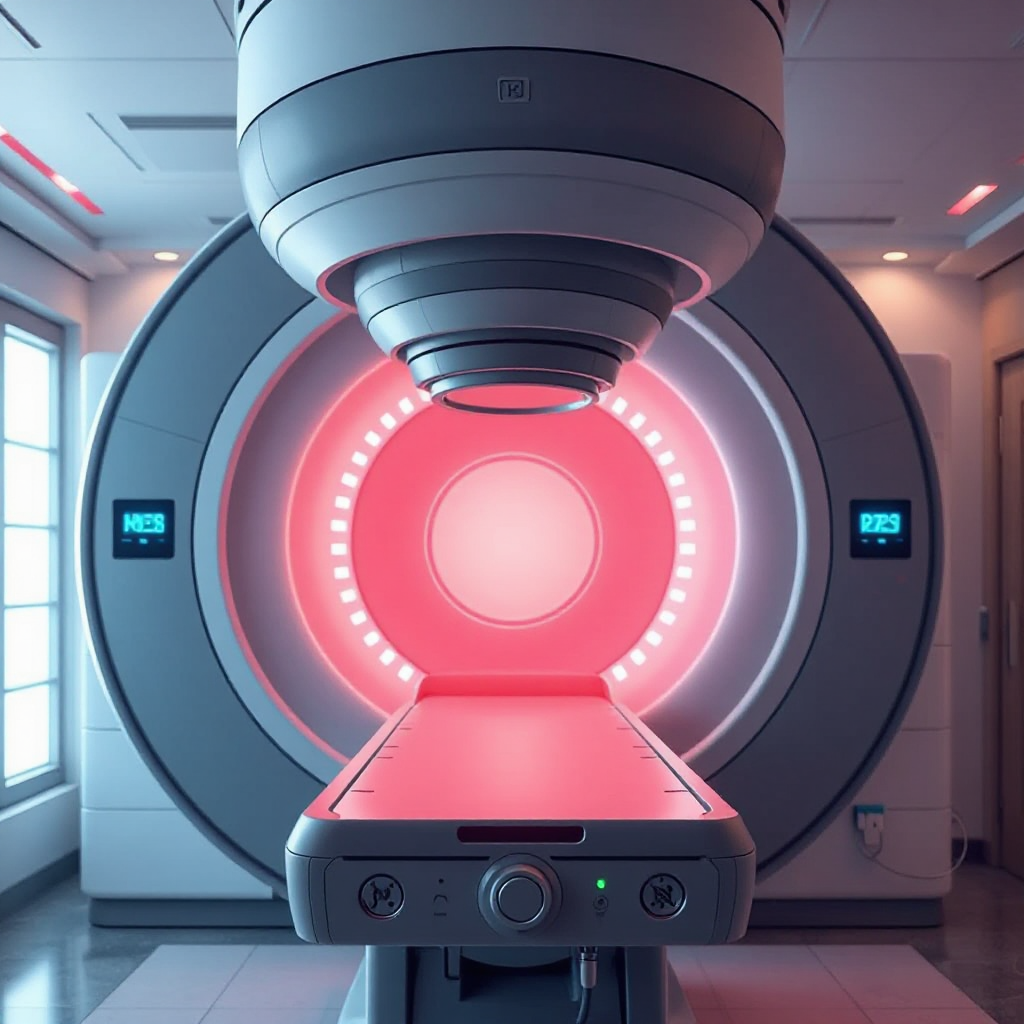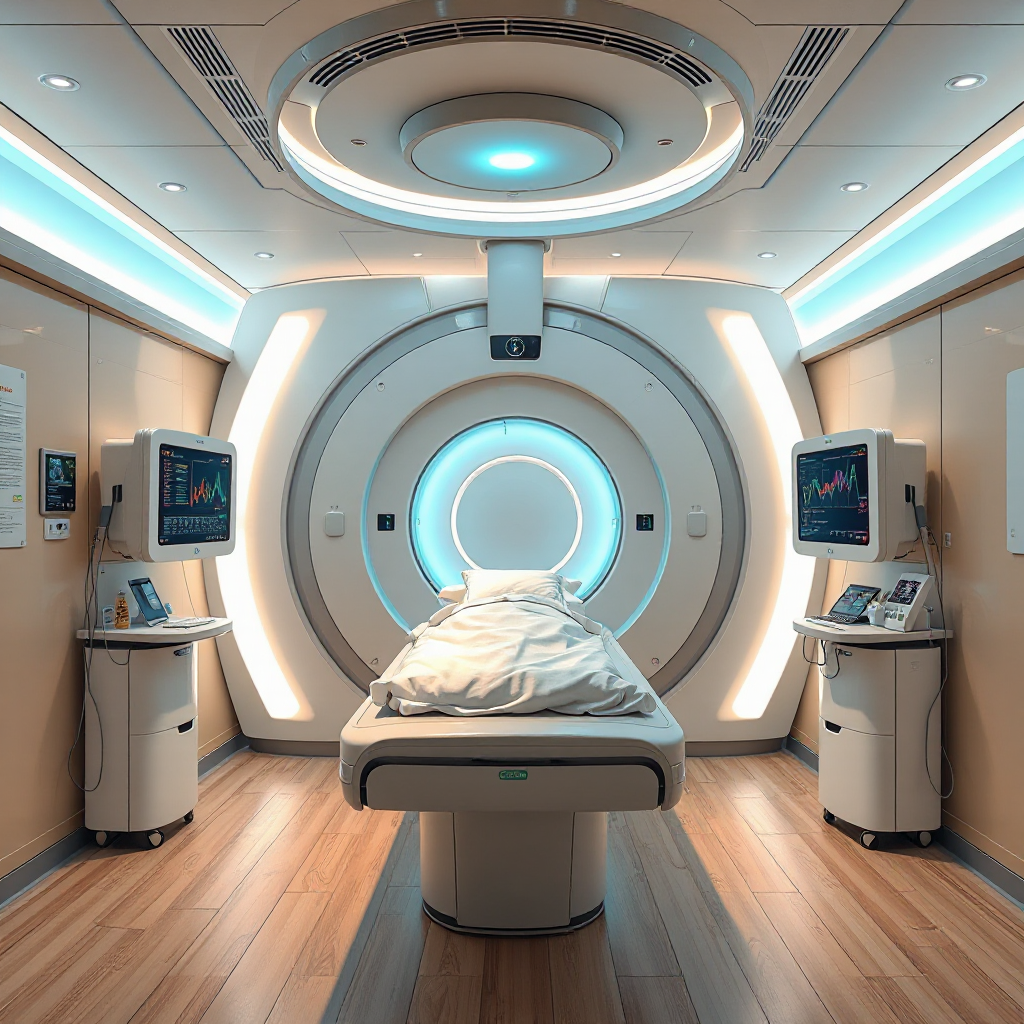What is Radiation Therapy for Cancer Treatment and How Does It Work

Cancer treatment radiation therapy is a crucial method in combating cancer. By utilizing high-energy radiation, it targets and damages the DNA of cancer cells, preventing their growth and spread. This adaptable treatment can be customized to suit individual needs. For instance, nearly half of women diagnosed with breast cancer incorporate radiation therapy into their treatment plans. It is also frequently employed for cancers such as brain, lung, prostate, and pancreatic. Based on your specific diagnosis, radiation therapy may be delivered externally or internally. This versatility underscores why cancer treatment radiation therapy is such a powerful and effective option for many patients.
Key Takeaways
Radiation therapy uses strong energy to harm cancer cell DNA. This stops them from growing and spreading.
The treatment is tailored to each person and works for many cancers, like breast, lung, and prostate.
It can be used in different ways: as the main treatment, before or after surgery, or to ease symptoms in serious cases.
Doctors use medical imaging to plan the therapy. This helps aim at tumors and protect healthy tissues.
Radiation therapy is usually safe but may cause short-term effects like tiredness and skin changes. These can be handled with good care.
How Does Cancer Treatment Radiation Therapy Work?

The Science Behind Radiation Therapy
Radiation therapy works by using high-energy particles or waves to damage the DNA of cancer cells. This damage stops the cells from growing and dividing, eventually leading to their destruction. The treatment is highly localized, meaning it focuses directly on the tumor. This precision helps minimize harm to surrounding healthy tissues. While some healthy cells may be affected, their ability to repair themselves makes the damage temporary. This is one of the key differences between radiation therapy and chemotherapy, which impacts the entire body.
Goals of Radiation Therapy
Radiation therapy plays a vital role in cancer treatment. It’s used by over half of cancer patients and can serve multiple purposes depending on your situation. Here are some of its primary goals:
Primary treatment: It can be the main method to treat cancer, aiming to prevent recurrence or slow tumor growth.
Before surgery: Shrinking tumors makes them easier to remove.
After surgery: It destroys any remaining cancer cells to reduce the risk of recurrence.
Symptom relief: In advanced cases, it can ease symptoms like pain or breathing difficulties caused by cancer.
Goal | Description |
|---|---|
Primary treatment | Used to treat cancer by preventing recurrence or slowing growth before surgery. |
Prior to surgery | Shrinks tumors for easier removal during surgery. |
Symptom relief | Eases symptoms like pain or breathing issues caused by cancer. |
After surgery | Destroys remaining cancer cells or alleviates side effects post-surgery. |
The Role of Medical Imaging in Treatment Planning
Medical imaging is essential for planning your radiation therapy. It creates detailed, three-dimensional images of the tumor, allowing doctors to target it with precision. Techniques like Image-Guided Radiotherapy (IGRT) use real-time imaging to ensure the radiation hits the tumor exactly where it’s needed. Advanced imaging also helps distinguish between cancerous and healthy tissues, reducing the risk of unnecessary damage. This careful planning ensures that your treatment is as effective and safe as possible.
Types of Cancer Treatment Radiation Therapy

Radiation therapy comes in different forms, each tailored to specific needs. The type of therapy you receive depends on factors like the cancer's location, size, and type. Let’s explore the three main types of cancer treatment radiation therapy.
External Beam Radiation Therapy
External beam radiation therapy is the most common type. It uses a machine called a linear accelerator to deliver high-energy radiation beams to your tumor from outside the body. This method is highly precise, targeting the tumor while sparing as much healthy tissue as possible. It’s often used for cancers like breast, lung, and prostate.
Here’s a quick comparison between external beam radiation therapy and other types:
Type of Radiation Therapy | Description |
|---|---|
External Beam Radiation Therapy | High-energy radiation is directed at the tumor from outside the body using a linear accelerator. |
Internal Radiation Therapy | A radiation source is placed inside the body, emitting radiation over time, such as in brachytherapy. |
External beam therapy is painless and typically done in outpatient sessions. You’ll lie still while the machine moves around you, delivering radiation from different angles.
Internal Radiation Therapy (Brachytherapy)
Internal radiation therapy, or brachytherapy, involves placing a small radioactive source inside your body. This allows doctors to deliver a high dose of radiation directly to the tumor while minimizing damage to nearby tissues. The radioactive source can be temporary or permanent. Temporary brachytherapy uses a capsule that stays in your body for a short time, while permanent implants lose their radioactivity gradually.
Brachytherapy is especially effective for:
Breast cancer
Skin cancer
Some head and neck cancers
This method is often used when the tumor is localized and accessible. It’s a great option for treating cancers in sensitive areas where precision is crucial.
Systemic Radiation Therapy
Systemic radiation therapy uses radioactive substances that travel through your bloodstream to target cancer cells. You’ll either swallow a pill, receive an injection, or get an infusion. This type of therapy is particularly effective for cancers that have spread or are difficult to reach with other methods.
Here’s a look at some cancers treated with systemic radiation therapy:
Cancer Type | Treatment Type |
|---|---|
Radioactive iodine (I-131) | |
Advanced Prostate Cancer | Targeted radionuclide therapy |
Gastroenteropancreatic Neuroendocrine Tumor | Targeted radionuclide therapy |
Systemic therapy is unique because it works throughout your entire body. It’s a powerful option for treating cancers that require a whole-body approach.
Effectiveness and Safety of Cancer Treatment Radiation Therapy
How Effective is Radiation Therapy?
Radiation therapy is one of the most effective tools for treating cancer. It works by targeting cancer cells with precision, damaging their DNA, and stopping them from growing. This treatment can shrink tumors, eliminate cancer cells, and even prevent cancer from coming back. For many types of cancer, like breast, prostate, and lung, it’s a key part of the treatment plan.
You might wonder how doctors measure its success. They look at factors like tumor size reduction, survival rates, and whether the cancer returns. Radiation therapy often works best when combined with other treatments, like surgery or chemotherapy. For example, it can shrink a tumor before surgery, making it easier to remove. It can also destroy any leftover cancer cells after surgery.
The effectiveness of radiation therapy depends on the type and stage of cancer. Early-stage cancers often respond very well. Even advanced cancers can benefit, especially when the goal is to relieve symptoms and improve your quality of life.
Is Radiation Therapy Safe?
Radiation therapy has come a long way in terms of safety. Modern technology ensures that the treatment targets cancer cells while sparing as much healthy tissue as possible. You might hear about tools like DoseRT® Cherenkov imaging, which provides real-time feedback during treatment. This helps doctors deliver the right dose to the right spot.
Other advancements, like AlignRT® technology, make sure you’re positioned correctly during each session. This reduces the risk of radiation hitting healthy areas. SimRT even accounts for your breathing, synchronizing the radiation beam with your natural movements. These innovations make the process safer and more precise.
You might still worry about side effects, but most are temporary and manageable. Your care team will monitor you closely and adjust your treatment if needed. With tools like MapRT and PatientID, errors are rare, and your safety is a top priority.
Radiation therapy is a powerful option for fighting cancer. Thanks to these advancements, it’s not only effective but also safer than ever before.
Potential Side Effects of Cancer Treatment Radiation Therapy
Common Side Effects
Radiation therapy can cause side effects, but most are temporary and manageable. These effects usually start during the second or third week of treatment and may last a few weeks after it ends. The most common side effects include fatigue and skin changes. You might feel unusually tired or notice redness, peeling, or irritation on the treated skin.
Other side effects depend on the area being treated. For example:
Head and neck: Mouth sores, trouble swallowing, or changes in taste.
Chest: Coughing or shortness of breath.
Abdomen: Nausea, vomiting, or diarrhea.
Pelvis: Bladder changes or sexual discomfort.
Tip: Keep in mind that your care team will monitor you closely to help manage these symptoms.
Managing Side Effects
You can take steps to ease the side effects of radiation therapy. Start by getting plenty of rest. Fatigue is common, so conserving your energy is important. Treat your skin gently by following your nurse’s instructions, like using recommended creams or avoiding harsh soaps.
Here are some additional tips to help you manage:
Maintain a balanced diet to combat nausea and malnutrition.
Stay active with light exercise to boost your mood and energy.
Talk to your doctor about any concerns. They might suggest medications, like topical steroids for skin issues or dietary changes for digestive discomfort.
Note: Support from friends, family, or a cancer support group can also make a big difference.
Long-Term Side Effects
Some side effects may appear months or even years after treatment. These long-term effects depend on the area treated and the radiation dose. For instance, radiation to the chest could lead to heart or lung issues over time.
Careful planning helps reduce these risks. Your doctor might use radioprotective drugs, like amifostine, to protect healthy tissues. It’s also important to discuss potential risks with your oncologist so you can make informed decisions.
While long-term effects sound concerning, they’re rare thanks to advancements in radiation therapy. Your care team will work hard to minimize these risks and ensure the best possible outcome for you.
Additional Considerations for Patients Undergoing Cancer Treatment Radiation Therapy
Who is Eligible for Radiation Therapy?
Radiation therapy isn’t for everyone, but it’s a common option for many cancer patients. Your eligibility depends on factors like the type, size, and location of your tumor. Doctors also consider your overall health and medical history. For example, if you have a localized tumor, radiation therapy might be a great choice to target it directly. On the other hand, if your cancer has spread widely, systemic radiation therapy could be more effective.
Your doctor will also evaluate whether you can handle the treatment. If you have certain conditions, like autoimmune diseases or previous radiation exposure, they might recommend alternative options. It’s important to discuss your medical history openly with your care team so they can create the best plan for you.
Precautions During Treatment
Radiation therapy is precise, but you’ll need to take some precautions to protect yourself and others. For instance, if you’re undergoing systemic radiation therapy, the radioactive material in your body could pose a risk to those around you. Your doctor might advise you to limit close contact with others, especially children and pregnant women, for a short time.
You’ll also need to care for your skin in the treated area. Avoid harsh soaps, tight clothing, and direct sunlight. Staying hydrated and eating a balanced diet can help your body recover faster. Always follow your care team’s instructions—they’re there to guide you every step of the way.
The Role of the Care Team
Your care team plays a huge role in your treatment journey. Each member has specific responsibilities to ensure you get the best care possible. Here’s a quick look at who’s involved and what they do:
Role | Responsibilities | Interaction Frequency |
|---|---|---|
Clinical Nurse Specialist | Assists with medical issues and lifestyle changes to support health and recovery. | Often part of everyday care. |
Physician Assistant | Helps with medical issues and lifestyle changes, supporting health and recovery. | Often part of everyday care. |
Residents and Fellows | Observe and assist the radiation oncologist during appointments. | Periodically during visits. |
Clinical Social Worker | Addresses psychological, psychosocial, and financial needs. | As needed. |
Radiation Therapist | Operates machines delivering radiation treatment. | Every treatment session. |
Nurse Coordinator | Manages care logistics, answers questions, and coordinates appointments. | Regular communication. |
Medical Assistant | Provides administrative support during appointments. | At each appointment. |
New Patient Coordinator | Schedules initial visits with the radiation oncologist. | At the start of treatment. |
Authorization Coordinator | Works with insurance for treatment authorization. | As needed. |
Front Desk Staff | Greets and checks in patients for appointments. | At each appointment. |
Your care team isn’t just there for medical support. They’re also your go-to resource for questions, concerns, and emotional support. Don’t hesitate to reach out to them—they’re here to help you through every step of your treatment.
Radiation therapy remains a cornerstone in cancer treatment, offering precise and effective results. Thanks to advancements like DoseRT® Cherenkov imaging and AlignRT technology, treatments are now safer and more accurate than ever. Collaborating with your healthcare team is key to optimizing outcomes. Ask questions, share concerns, and use available resources like 24/7 specialist support or financial assistance programs.
Remember, radiation therapy isn’t a one-size-fits-all solution. Always consult your doctor to understand your unique treatment plan and address any misconceptions or worries you may have.
FAQ
What happens during a radiation therapy session?
You’ll lie on a treatment table while a machine delivers radiation to the targeted area. The process is painless and usually takes 15-30 minutes. You’ll need to stay still, but you can breathe normally. Your care team monitors everything from another room.
Tip: Wear comfortable clothing to make the session easier.
Can radiation therapy cure cancer?
Radiation therapy can cure some cancers, especially when detected early. For others, it helps shrink tumors or manage symptoms. Its effectiveness depends on the cancer type, stage, and your overall health. Your doctor will explain how it fits into your treatment plan.
Will I lose my hair during radiation therapy?
Hair loss only happens if the treatment targets your scalp or a nearby area. For example, radiation to the brain may cause hair loss on your head. If the treatment focuses elsewhere, your hair won’t be affected.
Note: Hair loss from radiation is usually localized, unlike chemotherapy.
Can I continue working during radiation therapy?
Many people keep working during treatment, but it depends on how you feel. Fatigue is common, so you might need to adjust your schedule. Talk to your employer about flexible hours or remote work options if needed.
Is radiation therapy painful?
Radiation therapy itself isn’t painful. You won’t feel the radiation as it’s delivered. However, side effects like skin irritation or fatigue might cause discomfort later. Your care team will help you manage any symptoms that arise.
Reminder: Always share concerns with your doctor to stay comfortable during treatment.
See Also
Choriocarcinoma: Overview and Treatment Options Available Today
Anaplastic Large Cell Lymphoma: Definition and Treatment Approaches
Leydig Cell Tumors: Causes and Detailed Explanation Provided
Blastoma: Types and Comprehensive Understanding of the Condition
Duodenal Cancer: Symptoms to Recognize and Treatment Options
